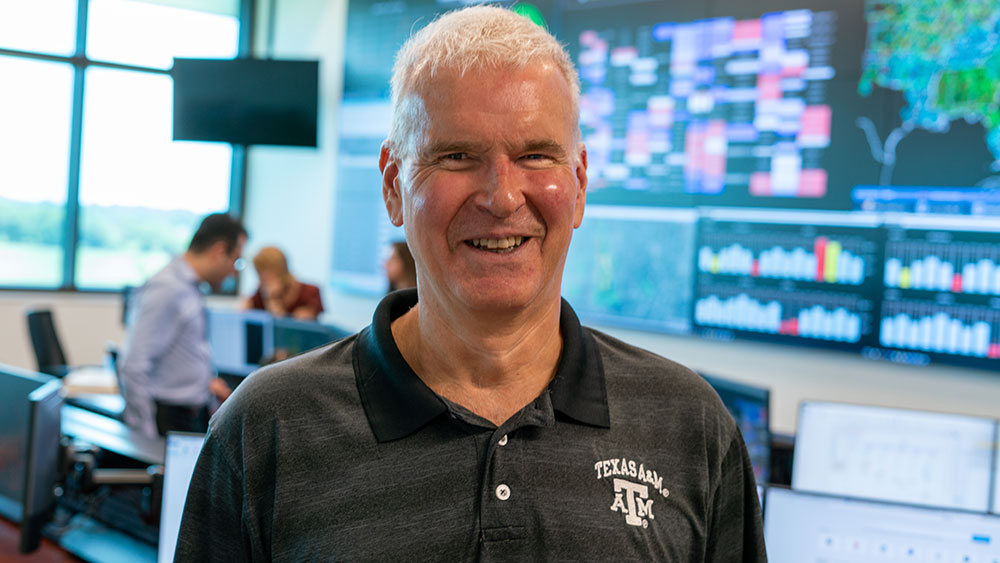
With the record-breaking heat and drought weather conditions Texas is currently facing, finding a solution to the growing need for reliable power from the electric grid is at an equally all-time high.
Dr. Thomas Overbye, professor and O’Donnell Foundation Chair III in the Department of Electrical and Computer Engineering at Texas A&M University and director of the Texas A&M Engineering Experiment Station’s Smart Grid Center, is investigating a novel way that historical weather can play a crucial role in benefiting the grid today. In particular, he is researching the outlier weather conditions, such as the extreme heat Texas is currently experiencing, or very low temperatures, such as those experienced in February 2021 during Winter Storm Uri.
According to the World Meteorological Organization, the number of recorded disasters in North America, Central America and the Caribbean has increased from a disaster occurring every 30 days on average in the 1970s to every seven days for the three decades between 1990 and 2019. While these extreme weather events used to be relatively infrequent, their incidence is growing, making it vital to include this historical data in the power flow to better safeguard the grid of tomorrow.
In order to prevent situations like what was experienced during Winter Storm Uri, you have to get a good feel for how likely these weather events are, and if you know how likely they are, then you can take that into account in your planning.
Weather information has been used in electric grid planning and operations since the 1880s. However, no one has yet introduced the idea of incorporating this information into the power flow, or load flow, of the grid, which is a system used to determine how the power flows from the generators through the transmission system to the distribution system (which is then used by consumers).
This project, funded by the Power Systems Engineering Research Center, introduces the inclusion of historical weather data in the power flow which will provide more context for power engineers and grid operators to effectively manage the electric grid during these extreme weather events and a chance for more informed decisions.
The power flow is one of the most common tools used to study and design large-scale, high-voltage electric grids and includes several algorithms, models, data and the associated human-machine interface used by power engineers. In order to include weather information in a power flow model, there is a need for adequate weather data and models of how the weather impacts the grid components, as well as the ability to map the weather information to relevant electric grid components.
Overbye’s approach to including weather data in the power flow is demonstrated on several electric grids ranging in size from 7,000 to 82,000 buses, or nodes that connect several lines and components, using weather data over several different years. His findings conclude that with little changes to existing models, the weather can be easily incorporated into the power flow algorithms to provide vast benefits to the power industry and energy consumers.
It is widely recognized that weather impacts human activity and subsequent power usage and operations. Further, wind and solar generation continue to grow — currently providing more than 14% of the United States’ electric energy — in turn, increasing the grid’s dependence on these sources.
Overbye has been pursuing research related to the power flow for over 40 years, but his interest in the integration of weather information began as a result of Winter Storm Uri.
“In order to prevent situations like what was experienced during Winter Storm Uri, you have to get a good feel for how likely these weather events are, and if you know how likely they are, then you can take that into account in your planning,” said Overbye.